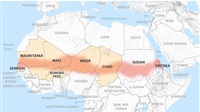'The country is adrift': echoes of Spanish flu as Brazil's Covid-19 catastrophe deepens

A century after the 1918 pandemic, South America’s largest
country has passed Britain to claim the world’s second-highest death toll
As a child growing up in 1940s São Paulo, Drauzio Varella
remembers his grandmother’s tales of how the Spanish flu ravaged the
blue-collar immigrant community they called home.
“So many people died that families would leave people
outside on the pavements, and early each morning the carts would come by to
collect them and take them off to burial in mass graves,” remembered Varella,
who would go on to become Brazil’s best-known doctor.
More than a century after the 1918 calamity, South America’s
largest country is again being shaken by a devastating pandemic, and Varella is
in disbelief.
“Nobody thought this could happen. Perhaps they imagined it
theoretically – that some kind of virus might come along,” said the 77-year-old
oncologist, author and broadcaster. “But even when this virus did show up, we
didn’t think it would cause a tragedy of such proportions.”
The precise magnitude of Brazil’s Covid-19 tragedy remains
unclear – but the story told by official statistics grows more wretched by the
day.
On Friday, Brazil overtook Britain as the country with the
world’s second-highest death toll: 41,901 deaths since the first fatality was
confirmed in São Paulo on 17 March.
A University of Washington projection indicated another
100,000 Brazilians could die before August, possibly placing Brazil ahead of
the US as the country with the most deaths.
As the catastrophe deepens there is growing anger at the
conduct of president Jair Bolsonaro, whose jumbled and dysfunctional handling
of a pandemic he has called a “fantasy” has made Boris Johnson’s widely panned
response look sober and efficient.
“This is the worst public health crisis we’ve faced – and it
has come at a time when we have the worst government in the world,” said Daniel
Dourado, a public health expert and lawyer from the University of São Paulo who
believes thousands of lives could have been saved by a swifter and less erratic
response. “The country is adrift.”
There are uncanny and painful parallels between the impact
of the Spanish flu – which historians say killed between 35,000 and 100,000
Brazilians – and the harm coronavirus is now inflicting.
Claudio Bertolli Filho, the author of a book on the 1918
pandemic, said Brazil’s then leaders had initially played down the unknown
influenza – just as Bolsonaro has dismissed coronavirus as a “bit of a cold”.
Then, too, authorities tried to hide the true scale of the
disaster – just as Bolsonaro’s health ministry has been accused of doing –
until, like now, the determination of Brazilian journalists made that
impossible.
Then, like now, doctors pushed untested and potentially
dangerous remedies, just as Brazil’s populist leader has promoted the use of
hydroxychloroquine despite limited scientific evidence of its effectiveness.
Bertolli Filho said one São Paulo quack was famed for injecting Spanish flu
patients with mercury. “He killed lots of people – and yet despite this many believed.”
As the Spanish flu ripped through cities, from Recife to
Rio, religious leaders also touted miracle cures just as powerful
televangelists today promise followers Covid-19 salvation with holy water and
supernatural seeds.
And in 1918, as now, the mysterious malady prompted an
explosion of rumour and conspiracy, including claims German submarines had
secretly spread the infirmity along the Brazilian coast. (In fact, it arrived
on an English merchant ship called the Demerara).
But perhaps no parallel is more cruel than the way in which
both catastrophes obliterated the idea pandemics chose victims
indiscriminately.
Bertolli Filho said the 1919 death of Brazil’s
president-elect, Rodrigues Alves, from the Spanish flu was widely cited as
proof epidemics were equal opportunity.
In fact, cemetery records showed most of São Paulo’s 5,000
dead hailed from working class, industrial districts such as Mooca, Ipiranga,
and Brás, where Varella’s grandmother watched the corpse collectors at work.
Today, the areas suffering most are blue collar communities such as
Brasilândia, Freguesia do Ó and Capão Redondo where many do not have the luxury
of social distancing or working from home.
In Rio, deprived western neighbourhoods such as Campo
Grande, Realengo and Bangu have recorded some of the highest death tolls while
densely populated favelas like Rocinha and the Complexo da Maré are also being
punished.
“The truth is, not even a pandemic is truly democratic,”
Bertolli Filho said.
Varella, who lives in his grandmother’s house to this day,
said it was too soon to know just how high a price the poor would pay in a
country where the richest 1% control 28% of the wealth.
“Brazil’s situation is so worrying and so unique because if
you look at the path the epidemic took – from China, through Asia, and then
Europe and on to the US – Brazil was its first encounter with a country
suffering from the kind of severe social inequality ours does.”
“It will hit other unequal countries, like India and
Pakistan, but here was the first – and we are seeing this play out now in a
country where 13 or 14 million people live in precarious conditions and great
poverty.”
A woman walks past water utility workers will disinfect the
Turano favela in an effort to curb the spread of the coronavirus in Rio.
The omens were not good. “Ever since the epidemic began,
I’ve woken up every day feeling afflicted, thinking about what will happen and
how,” Varella said.
“The biggest problem we are seeing across Brazil right now
is the epidemic spreading through the outskirts of cities and their rundown
centres where you have tenements and the homeless live.
“Where this will end we have no clue – no clue at all,” he
admitted. “Because we are now right in the middle of the dissemination.”







